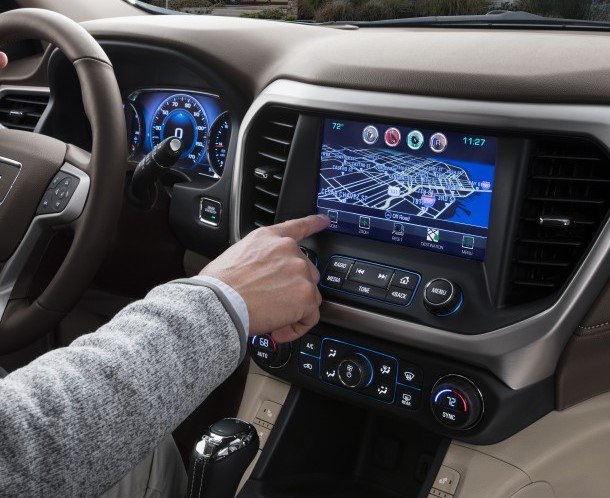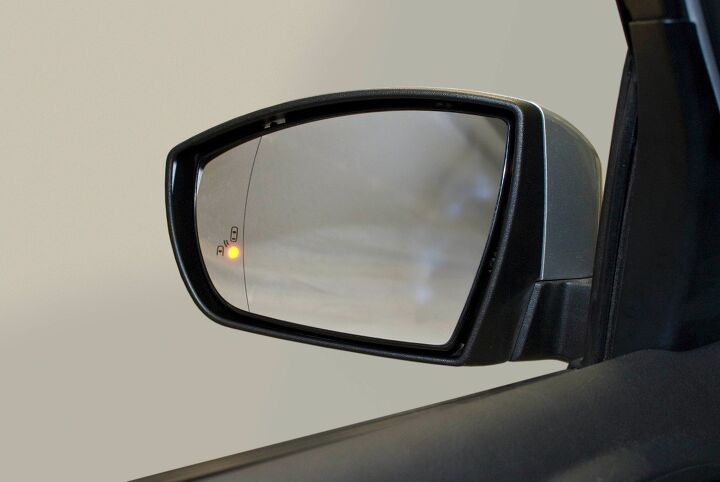#BlindSpotMonitoring
Motorcycles Set to Embrace Electronic Nannies, Thanks Ducati
On Tuesday, Ducati announced it would be adding adaptive cruise control and blind-spot monitoring to the Multistrada V4 — effectively making it the first production motorcycle in the world to receive such features. While chucking front and rear-facing radar onto an automobile has become relatively common, motorbikes haven’t been getting them. Pricing remains the largest concern but many motorcycle enthusiasts have also pointed out the systems may expose riders to unnecessary risks.
If the forward-mounted radar on your car sees the vehicle in front getting closer, it may jam on the brakes to save you from an accident. On two wheels, that same action runs the risk of tossing a rider over the handlebars before promptly running themselves over. This leaves us wondering as to the true usefulness of these systems migrating to motorcycles. Have we gone mad with electronic nannies or is all this progress worth it to keep us safe?
Scary Stats: Drivers Don't Know Jack About the Tech In Their Car
Over the weekend, I found myself conversing with a young woman who admitted to being slightly creeped out by modern automotive technology. She had a bone to pick with everything from push-button ignitions to adaptive cruise control. It was surprising admission from an individual who is planted squarely in the middle of the Millennial age bracket and has no serious interest in cars, but one I’ve been hearing more often lately.
The American Automobile Association seems to be rather touchy on the issue, as well. Much of its interest in the subject revolves around present-day tech lending itself to distracted driving, something it is firmly against. But the AAA Foundation for Traffic Safety appears absolutely convinced that the introduction of advanced driver assistance systems will save lives. However, it also believes that its full potential won’t be unlocked until consumers accept these technologies, understand how to use them, use them as intended, and avoid misusing or becoming over-reliant on them.
Frankly, that sounds like wishful thinking. So long as advanced driving aids exist, they’ll probably be misunderstood and misused. People don’t even use their turn signals correctly, for Christ’s sake.
No Fixed Abode: LaneWatch, We Hardly Knew Ye
I don’t know who coined the term — I suspect it was Car and Driver, which was then at an all-time peak of editorial excellence — but this is probably one of those cases where success has many fathers, and the child in this case was the phrase “idiot light.”
Let’s say that you were a new-car buyer in 1977. The vast majority of the cars you saw in a dealership would have just two gauges: speedometer and fuel level. Any other information was conveyed in binary fashion by a set of light-up warnings. The typical Seventies American car would have TEMP (for overheating), OIL (for lack of oil pressure), ALT (alternator/battery), and BRAKE (for low brake fluid), but some models had additional lights for low coolant and other functions.
The self-appointed automotive cognoscenti were very contemptuous of these lights, because they didn’t convey much information and they usually didn’t convey it until things had gotten drastic. Why not have a temperature gauge to let you know that your car was getting hot on the way up the Grapevine? Or an oil-pressure gauge, to give you a general idea of your engine health? Why couldn’t the driver be trusted to know the real information and to act accordingly?
Lane Departure Warnings, Blind Spot Alerts (Probably) Reducing Crashes: Study
Lane departure alerts and blind spot monitoring systems can significantly reduce crashes if consumers use the features, according to two recent studies by the Insurance Institute for Highway Safety. While this information falls into the no-brainer category, rarely do we get specific metrics on these particular technologies.
“This is the first evidence that lane departure warning is working to prevent crashes of passenger vehicles on U.S. roads,” explained Jessica Cicchino, IIHS vice president for research. “Given the large number of fatal crashes that involve unintentional lane departures, technology aimed at preventing them has the potential to save a lot of lives.”
NHTSA Unveils New Tests, New 5-star Safety Rating System for Cars
The National Highway Traffic Safety Administration on Tuesday announced significant changes to its tests and rating system for every new car in the U.S. Beginning in 2018, new cars will be rated on a five-star system, in half-star increments (for the first time), and will encompass information from new tests — including front overlap crashes already in use by other safety organizations — and pedestrian impact information.
The proposed changes would place an emphasis on active safety features such as blind spot monitoring and crash avoidance systems. The announcement Tuesday followed a statement last month that the agency would recommend automatic emergency braking on new cars beginning in 2018.
“The changes provide more and better information to new-vehicle shoppers that will help accelerate the technology innovations that saves lives,” said U.S. Transportation Secretary Anthony Foxx.



















Recent Comments